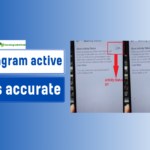Introduction
49.2.5 Outside A/C Belt Replacement: A Comprehensive Guide? Air conditioning (A/C) systems are an essential part of modern vehicles and machinery, providing comfort and maintaining internal temperatures. One of the key components that allows an A/C system to function efficiently is the A/C belt, also known as the serpentine or drive belt. Over time, this belt can wear out, lose tension, or break, resulting in decreased performance of the air conditioning system or a complete failure.
The task of replacing an outside A/C belt—especially for a system adhering to the specific guidelines of 49.2.5—requires a clear understanding of the mechanical intricacies, safety protocols, and the tools involved. In this detailed guide, we will walk through the steps for replacing an outside A/C belt, ensuring that the process is clear, efficient, and within the safety measures.
1. Understanding the A/C Belt’s Role in the System
The A/C belt plays a pivotal role in the overall functioning of a vehicle’s air conditioning system. This belt connects the engine’s crankshaft to the A/C compressor, which is responsible for compressing refrigerant and circulating it through the system. By maintaining the connection, the belt ensures the compressor can perform its duties effectively.
The outside A/C belt, as referenced in the 49.2.5 guideline, pertains specifically to external belt-driven systems, where access and visibility are relatively easier compared to internal systems. However, even though it is externally mounted, wear and tear from weather elements, dust, and engine heat can degrade its efficiency over time.
2. Signs That Indicate a Belt Replacement Is Needed
Before diving into the steps for replacing the A/C belt, it is important to recognize the signs that the belt is failing:
- Squealing Noises: A high-pitched squeal when starting the vehicle or turning on the A/C system often indicates a worn-out or loose belt.
- Visible Cracks or Frays: Inspection of the belt may reveal cracks, fraying, or glazing (a shiny, hard surface), all of which are signs that the belt is worn and should be replaced.
- Air Conditioning Issues: If the A/C system isn’t blowing cold air or is showing inconsistent performance, a damaged belt may be to blame.
- Belt Slipping or Misalignment: If the belt slips off the pulley or seems misaligned, this could point to a tension issue or worn-out belt that needs replacement.
Ignoring these signs can result in complete A/C system failure, leading to discomfort and potentially more expensive repairs down the line.
3. Tools and Equipment Required for A/C Belt Replacement
Proper preparation is key when replacing the outside A/C belt. Having the right tools ensures safety and efficiency. Below is a list of essential tools required:
- Wrench Set: For loosening and tightening bolts around the tensioner pulley and other components.
- Ratchet and Socket Set: Depending on the vehicle model, a socket set is often required to remove various bolts.
- Belt Tension Gauge: To ensure the new belt is tensioned correctly.
- Screwdrivers: Used for prying and aligning components as necessary.
- Belt Removal Tool: Specialized tool for removing the old belt, especially in vehicles with complex pulley systems.
- Replacement Belt: Ensure you have the correct belt that matches your vehicle’s make, model, and A/C system.
- Safety Gear: Gloves, safety glasses, and appropriate work attire to protect yourself during the replacement process.
4. Step-by-Step Guide to Replacing the Outside A/C Belt
Step 1: Turn Off the Engine and Disconnect the Battery
Safety is the top priority when working on a vehicle’s A/C system. Before beginning, ensure the engine is turned off and cool. Disconnect the negative terminal of the battery to avoid any accidental startups while working on the belt.
Step 2: Locate the A/C Belt and Assess Accessibility
Consult the vehicle’s manual to identify the location of the A/C belt. In most cases, the outside A/C belt is easily accessible, but in some vehicles, you may need to remove additional components like covers or splash guards.
Step 3: Release the Belt Tensioner
The belt is kept taut by a tensioner pulley. Using a wrench or a specialized belt tensioner tool, rotate the tensioner to release tension on the belt. Depending on the design, the tensioner may need to be rotated clockwise or counterclockwise.
Step 4: Remove the Old Belt
With the tension released, carefully slip the old belt off the pulleys. Take note of how the belt is routed around the pulleys, as you will need to replicate this with the new belt.
Step 5: Inspect the Pulleys and Tensioner
Before installing the new belt, it’s a good idea to inspect the pulleys and tensioner for any signs of wear or damage. Spin the pulleys by hand to check for smooth operation. If any pulley feels rough or makes noise, it may need to be replaced.
Step 6: Install the New Belt
Refer to the routing diagram found in the vehicle’s manual (or often placed near the engine bay) to correctly position the new belt around the pulleys. Make sure the belt sits properly within the grooves of each pulley.
Step 7: Reapply Tension to the Belt
Once the belt is correctly positioned, use the wrench or tensioner tool to reapply tension. Check the tension using a belt tension gauge to ensure it falls within the manufacturer’s specified range. Incorrect tension can lead to premature wear or slippage.
Step 8: Double-Check Alignment and Tension
After the new belt is in place and tensioned, take a few moments to double-check that everything is aligned and secure. Misalignment can cause rapid belt degradation and failure.
Step 9: Reconnect the Battery and Test the A/C System
With the new belt installed, reconnect the battery and start the engine. Engage the A/C system to ensure the belt is functioning properly. Listen for any unusual noises and observe the belt’s movement to confirm proper alignment and tension.
5. Common Issues During Replacement
Even with careful preparation, a few common issues may arise during the A/C belt replacement process. Here’s how to address them:
- Stubborn Bolts: If bolts are stuck due to rust or over-tightening, applying a penetrating oil can help loosen them.
- Belt Slippage: If the new belt keeps slipping off, the tensioner or pulleys may be worn out and require replacement.
- Incorrect Belt Size: Always double-check that you have the correct replacement belt. Using an incorrect size can lead to performance issues.
6. Maintenance Tips to Prolong Belt Life
After successfully replacing the outside A/C belt, following a few maintenance tips can help extend the life of the new belt:
- Regular Inspections: Periodically check the belt for signs of wear, cracks, or glazing. Catching early signs of wear can prevent unexpected failure.
- Keep Pulleys Clean: Dirt and debris can accumulate on pulleys and cause the belt to wear prematurely. Regular cleaning can help prolong the belt’s life.
- Monitor Tension: Over time, belts can stretch and lose tension. Adjusting the tension periodically can prevent slippage and extend the life of the belt.
7. Conclusion
Replacing the outside A/C belt as outlined in 49.2.5 is a manageable task with the right tools and approach. While the process is relatively straightforward, paying close attention to belt tension, alignment, and overall system health is essential for ensuring that your vehicle’s air conditioning system operates smoothly for years to come. Regular maintenance and early detection of wear signs can save time, money, and prevent system breakdowns.
By following this guide, you’ll be equipped with the knowledge and confidence to successfully replace your outside A/C belt and maintain optimal performance in your vehicle’s air conditioning system.











